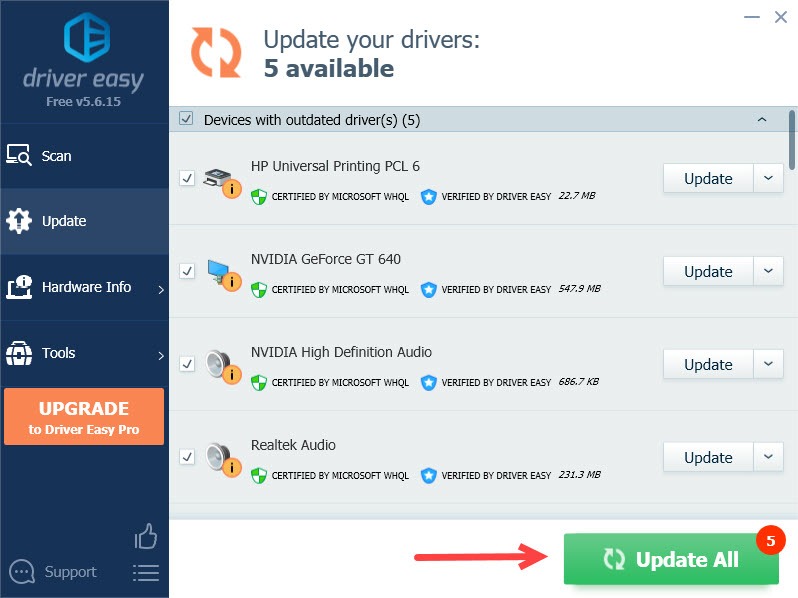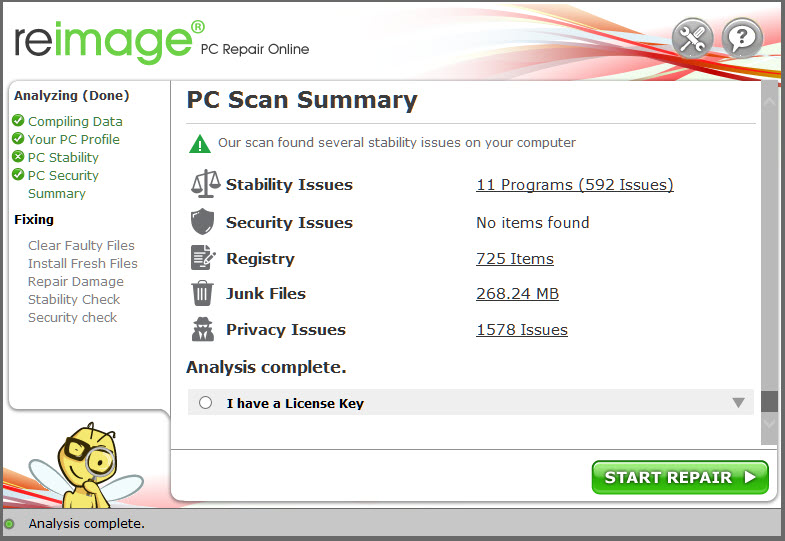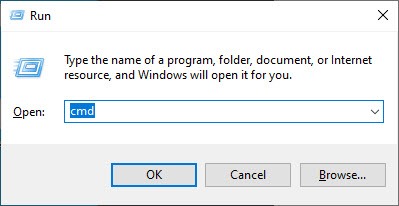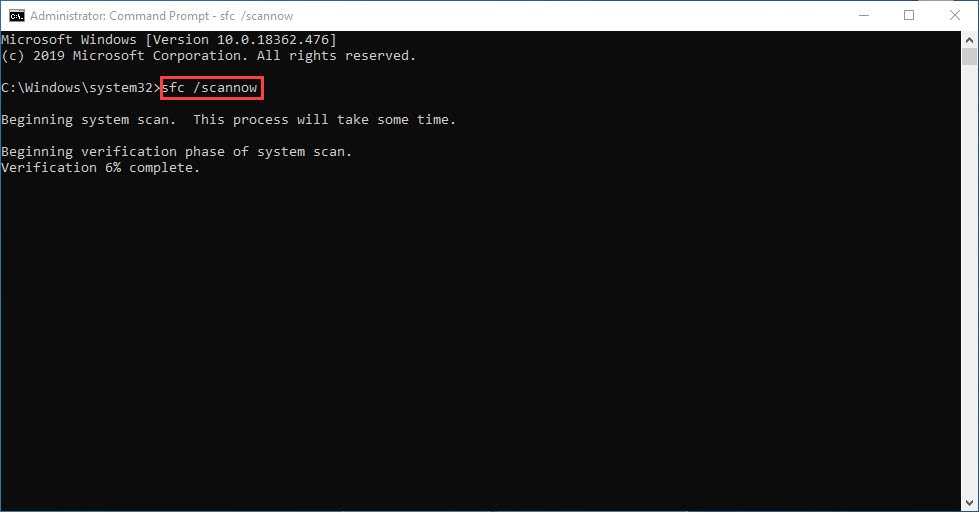Windows 7 Dell E6420 Blue Screen Error Codes
We expect our tech products to work every time we turn them on. It's never more upsetting than seeing a black screen all of a sudden. Everything else seems to work just fine. The fan is spinning, and the indicator light is on. What's wrong with my screen? Don't panic. The Black Screen of Death is very common, and whatever the cause is, you can fix it with the following methods.
Why you're experiencing a black screen issue
The main cause of the Dell black screen issue is a bad connection between your graphics drivers and your operating system. Another possible cause is a display adapter driver update issue. You may also run into a Black Screen of Death after system updates or installations, which you may need a reinstallation of Windows.
Try these fixes
- Restart your graphics drivers
- Force shut down your laptop
- Boot into Safe Mode
- Update your graphics driver
- Restart your explorer.exe process
- Repair your PC without losing any files
- Reset or update the Bios
Fix 1: Restart your graphics drivers
Whenever you run into a BSOD problem, you can always try the keyboard shortcut: press the Windows logo key + Ctrl + Shift + B at the same time. This hotkey combination will help you restart your PC's graphics drivers.
In many cases, your Dell laptop black screen error is simply caused by a bad connection between your operating system and monitor. Therefore, you can try the hotkey combination first to reconnect the display.
If this doesn't fix your black screen problem, please try the next fix.
Fix 2: Force shut down your laptop
Since you can't restart your Dell laptop the usual way as it gets stuck, here's what you can do:
- Disconnect all external devices or peripherals (such as a printer, Bluetooth, or USB devices).
- Power off your laptop by pressing the Power button for about 10 to 20 seconds.
- Disconnect the AC adapter and remove the battery intact.
- Drain the remaining battery by holding onto the power button for approximately 60 seconds.
- Place the battery back in and plug in the charger.
- Press the Power button to turn on your laptop.
If your laptop still doesn't show the display, there might need to boot into Safe Mode to fix it.
Fix 3: Boot into Safe Mode
Safe mode allows your computer to run in a basic state. This can help you narrow down the source of your black screen problem and do some basic troubleshooting. Here's how to do it:
1. How to enter Safe Mode
- Your Dell laptop should be off. If your laptop is on, turn it off.
- Turn on your laptop by pressing thePowerbutton.
- Hold theShift key and tap theF8 keybefore the Windows logo shows up. Doing so will bring out the Recovery Modemenu.
(Press F8 if you're on Windows 7.)
- If you couldn't enter Safe Mode on your first attempt, then try again. It may take several attempts before it works so just be patient.
- While in theRecovery Mode menu, selectSee advanced repair options > Troubleshoot> Advanced options > Windows Startup Settings> Restart.
- After the computer restarts, there's a list of options. Choose 5 or F5 to enter Safe Mode with a network connection.
If everything works out fine in Safe Mode, then the problem is most likely triggered by an outdated graphics driver, third-party applications, or computer virus.
To get rid of the black screen error, you can try to uninstall the newly installed applications, perform a virus scan. If the black screen still persists, then head to Fix 4 to update your graphics driver.
2. Screen still goes black? Connect to an external display.
Press the Windows logo key + P to bring up the display list. Try selecting different display options for other attached displays such as TV or a second monitor. Then press the P or down arrow key to select a display and then hit Enter.
But if you still can't see ANYTHING in Safe Mode, you may need to go to Fix 6 and Fix 7 to solve your issue.
Fix 4: Update your graphics driver
A black screen problem may occur if your graphics driver is out of date. To improve computer performance, it's important to make sure that you always have the latest graphics driver installed.
You can update your audio driver manually, if you like, by visiting the manufacturer's website, finding their driver download page, finding the right driver, etc. But if you're not comfortable playing with device drivers, or you simply don't have the time, we recommend doing it with Driver Easy. Here's how:
Just click Update All to automatically download and install the correct version of all the drivers that are missing or out of date on your system. (This requires the Pro version of Driver Easy – you'll be prompted to upgrade when you click 'Update All'. If you don't want to pay for the Pro version, you can still download each driver with Driver Easy, then manually install them the normal Windows way.)

Don't forget to restart your PC for the changes to take effect.
All the drivers in Driver Easy come straight from the manufacturer. Feel free to try the Pro version as you will getfull support and a 30-day money back guarantee. If you need assistance, please contact Driver Easy's support team atsupport@drivereasy.com.
Check if the annoying black screen issue reoccurs. If your desktop becomes normal again, then congrats! If the black screen still persists, please move on to the next fix.
Fix 5: Restart your explorer.exe process
Explorer.exe manages the desktop, taskbar, and other processes on your laptop, so if it's not working properly, your screen goes black. In this case, you will need to restart the process to see if it solved the problem.
1) On your keyboard, press the Ctrl + Shift + Esc keys at the same time to open Task Manager.
2) Click the Details tab (or the Processes tab if you're on Windows 7), then select explorer.exe and click End task.

3) Restart your computer and see if the black screen is gone now.
If you still see the black screen, then go on to try the next fix.
Fix 6: Repair your PC without losing any files
When you're experiencing a BSOD or Black Screen issue, it's always a critical error, of a non-recoverable nature, that causes the system to "crash". You can spend countless hours trying to figure out how to repair the 'black screen on Dell laptop'.
If you're able to access the Windows desktop in Safe Mode, you can run a complete check on your PC and Windows system.
- Option 1 – Automatically (Recommended)
Use a repair tool to check various areas in your computer to determine the cause of the Dell laptop black screen. It will deal with issues related to hardware faults, system errors, critical system files and find the right fix for you.
- Option 2 – Manually
Use powerful antivirus software to determine whether it's caused by a virus. Then, run the Windows System File Checker to find corrupt, damaged system files and manage to restore them if there're any. However, this tool can only diagnose major system files, and won't deal with damaged DLL, Windows Registry key, etc.
Option 1 – Automatically (Recommended)
Reimage (commonly known as Reimage Repair) is a computer repair software that can diagnose problems on your computer and fix them immediately.
Reimage Windows Repair is tailored to your specific system and is working in a private and automatic way. It will firstly check hardware-related issues to identify problems, and then security issues (powered by Avira Antivirus), and finally it detects programs that crash, missing system files. Once complete, it will find a solution to your specific problem.
Reimage is a trusted repair tool and it will do no harm to your PC. The best part is that you won't need to worry about losing any programs and your personal data. Read Trustpilot reviews.
1) Download and install Reimage.
2) Open Reimage and run a free scan. This might take 3~5 minutes to fully analyze your PC. Once complete, you will be able to review the detailed scan report.

3) You'll see the summary of detected issues on your PC. ClickSTART REPAIR and all the issues will be fixed automatically. (You'll need to purchase the full version. It comes with a 60-day Money-Back Guarantee so you can refund anytime if Reimage doesn't fix your problem).

Note: Reimage comes with 24/7 Technical Support. If you need any assistance while using Reimage, click the question mark on the upper-right corner of the software, or use one of the following: Chat: https://tinyurl.com/y7udnog2
Phone: 1-408-877-0051
Email: support@reimageplus.com / forwardtosupport@reimageplus.com
Option 2 – Manually
First, be sure to determine if your PC is infected with a virus. Once complete, use the following steps to check and restore your system files. This might take time and computer skills.
Step 1. Scan corrupt files with System File Checker
System File Checker (SFC) is a Windows built-in tool to identify and repair corrupted system files.
1) On your keyboard, press the Windows logo key and R at the same time to open the Run box. Type cmd and press Ctrl+Shift+Enter to run Command Prompt as administrator.

Click Yes when prompted for permission to make changes to your device.
2) In the Command Prompt, type the following command and hit Enter.
sfc /scannow
3) System File Check will begin to scan all system files and repair any corrupted or missing ones it detected. This may take 3-5 minutes.

4) You may receive something like the following messages after the verification.
- no errors
- it fixed some errors
- could not fix all errors
- could not fix errors at all
- ……
No matter what message you receive, you can try running dism.exe (Deployment Image Servicing and Management) to further scan the health of your PC.
2. Run dism.exe
1) Run Command Prompt as admin and enter the following commands.
- This command line will scan the health of your PC:
dism.exe /online /cleanup-image /scanhealth
- This command line will restore the health of your PC:
dism.exe /online /cleanup-image /restorehealth
2) After the restore health process finishes, you may get some error messages.
- If restore heath gave you errors, you can always try this command line. This will take up to 2 hours.
dism /online /cleanup-image /startcomponentcleanup
- If you getError: 0x800F081F with the restore health scan, reboot your PC and run this command line.
Dism.exe /Online /Cleanup-Image /AnalyzeComponentStore
Restart your PC after repairing the corrupt files. If your PC works out just fine, then congrats! If it's the black screen persists, don't panic. There are a few more fixes you can try.
Fix 7: Reset or update the Bios
Another possible cause of black screen can be corrupt bios settings or outdated bios version. To fix it, you can reset the bios first to see if solves your problem.
- Restart your laptop.
- When you see theDell logo, press theF2 or F12 key several times until you see Entering Setup.
- Press F9 (or Alt + F, or the load defaults button shown on the screen) to load the default settings.
- PressESC to exit the BIOS screen and be sure to select theSave and Exitoption.
- Choose the Enter key to save all changes and exit the BIOS screen. Allow your system to restart for the BIOS settings to reset.
You can also update BIOS to the latest version if resetting the BIOS to factory defaults won't fix the problem.
How to update Bios? Go to Dell Support Page to download the latest Bios version of your Dell laptop model. Then follow the instructions provided by Dell to update Bios. If you don't know how to do it, please check Dell Bios Update Guide.
Hopefully, one of the fixes above solved your Dell laptop black screen issue. Feel free to drop us a comment if you have any questions or suggestions. Black screens that occur seemingly at random are usually the result of a more serious hardware problem which might be better left with professional hands.
Source: https://www.drivereasy.com/knowledge/how-to-fix-black-screen-on-dell-laptop-full-guide/